Bismillaher Rahmanir Rahim.
Assalamu Alaikum Wa Rahmatullahi Wa Barakatuhu
Dear Companions Today I want to share with you some words about the evils of killing foetuses.Welcom to this post and congratulations to all
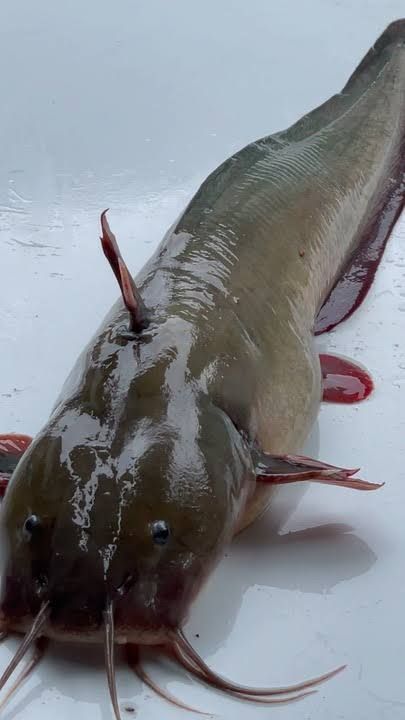
"Foreign Magur fish" refers to the African catfish (Clarias gariepinus), a species that has been widely introduced for aquaculture purposes due to its rapid growth rate and adaptability to different environments. Here, we’ll delve into the cultivation methods of this fish, its nutritional properties, and its role in meeting nutritional needs in the context of fish farming and human consumption.
- Cultivation Method of Foreign Magur Fish (Clarias gariepinus)
Site Selection
The first step in cultivating African catfish is choosing an appropriate site. Ideally, the area should have a reliable water source such as a pond, stream, or borehole. The water quality should be good, with minimal pollution, and the pH should range between 6.5 and 8.5. Temperature is also crucial, as African catfish thrive in water temperatures between 25°C and 30°C.
Pond Preparation
Ponds can be either earthen or concrete, with earthen ponds being more common due to their cost-effectiveness. The pond should be cleared of unwanted vegetation, treated for any pests or parasites, and then left to dry out before filling it with water. It's also essential to check the pond's drainage system to ensure proper water flow and to prevent water stagnation.
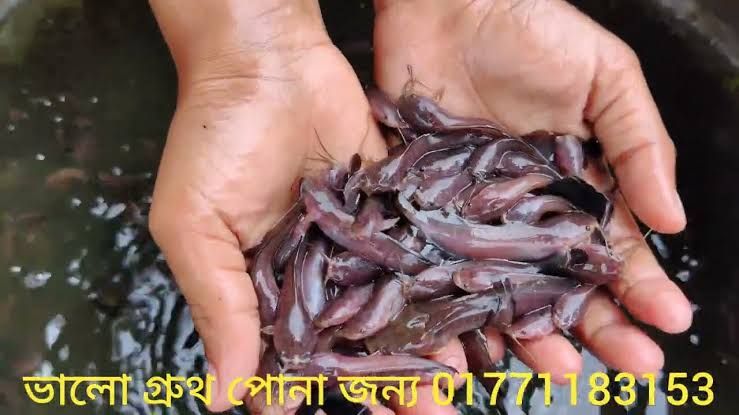
source
Stocking
Once the pond is prepared, stocking is the next crucial step. Fingerlings (juvenile fish) of African catfish are stocked at a density that typically ranges from 20 to 40 fish per square meter, depending on the size of the pond and the intended growth period. It is important to source healthy fingerlings from reliable hatcheries to ensure a high survival rate.
Feeding
Feeding is one of the most critical aspects of African catfish cultivation. These fish are omnivorous and can consume a wide range of feed, from commercial pellets to locally available organic waste, insects, and small fish. Commercial catfish feed usually contains high levels of protein (35-45%) to support rapid growth. Feeding should be done twice daily, preferably in the morning and evening, with the amount based on the body weight of the fish (typically 2-5% of their body weight).
Water Quality Management
Maintaining optimal water quality is essential for the health and growth of the fish. Regular monitoring of the water's pH, temperature, dissolved oxygen, and ammonia levels is crucial. Water should be replaced periodically to maintain freshness and prevent the buildup of waste products. Aeration systems can be installed to increase the oxygen level in the water, particularly in densely stocked ponds.
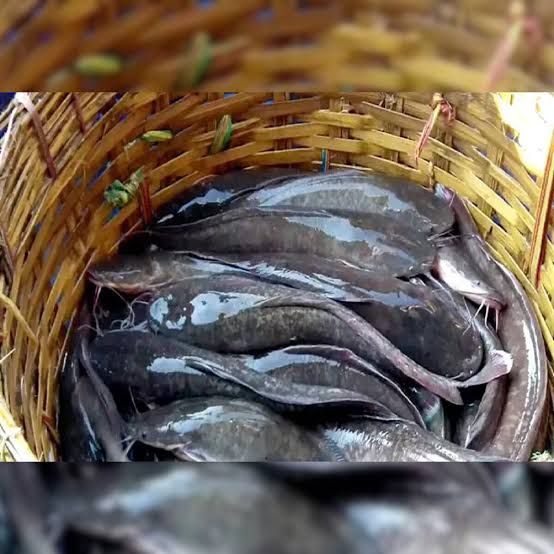
source
Disease Control
Diseases in African catfish can be controlled by maintaining proper hygiene in the ponds and providing the fish with a balanced diet. Common diseases include bacterial infections, fungal infections, and parasitic infestations. Early detection and prompt treatment using antibiotics, antifungals, or antiparasitic agents can prevent the spread of diseases.
Harvesting
African catfish can be harvested after 4-6 months of growth, depending on the feeding and environmental conditions. Harvesting can be done using nets, and it is recommended to harvest in the early morning or late afternoon to reduce stress on the fish. The size at harvest usually ranges from 500 grams to 1 kilogram per fish.
- Nutritional Properties of Foreign Magur Fish
African catfish (Clarias gariepinus) is valued for its excellent nutritional profile, making it a highly desirable species in the aquaculture industry. The key nutritional properties of this fish include:
High Protein Content: African catfish is a rich source of protein, with levels ranging between 15% and 20% per 100 grams of raw fish. This protein is of high biological value, containing all essential amino acids required by the human body.
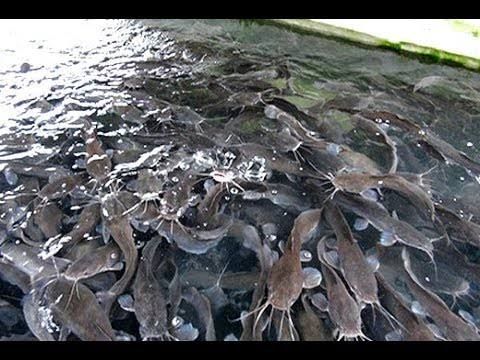
source
Low-Fat Content: The fat content of African catfish is relatively low compared to other fish species, with a value of around 4-8%. The fat that it does contain is mostly unsaturated fatty acids, which are beneficial for heart health.
Vitamins and Minerals: African catfish is also a good source of essential vitamins such as Vitamin A, Vitamin D, and B-complex vitamins like niacin (B3), pyridoxine (B6), and cobalamin (B12). Additionally, it contains important minerals, including calcium, phosphorus, iron, zinc, and potassium.
Omega-3 and Omega-6 Fatty Acids: Although not as high in omega-3 fatty acids as some other fish, African catfish still provide a significant amount of these essential fats, contributing to brain and heart health.
- Role of Foreign Magur Fish in Meeting Nutritional Needs
Role in Fish Farming
African catfish play a significant role in aquaculture due to their rapid growth rate, resilience to varying water conditions, and ability to thrive in high-density environments. This adaptability allows farmers to produce a substantial amount of fish in a relatively short period, making it a valuable species for meeting the increasing global demand for fish protein.
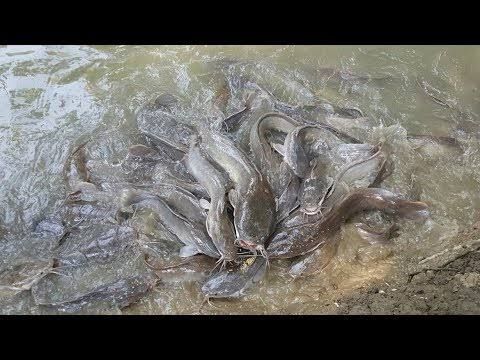
source
Feed Conversion Efficiency: African catfish are known for their excellent feed conversion ratio (FCR), which measures the efficiency with which they convert feed into body mass. An FCR of 1.0 to 1.5 is common, meaning that for every kilogram of feed, the fish gain nearly one kilogram in weight. This high efficiency is crucial in reducing feed costs, which constitute the largest expense in fish farming.
Sustainability: The ability of African catfish to consume a variety of feed types, including agricultural by-products and organic waste, makes their cultivation more sustainable compared to other fish species that rely heavily on high-quality feed. This flexibility in diet reduces the environmental impact and reliance on fishmeal, which is often derived from wild-caught fish.
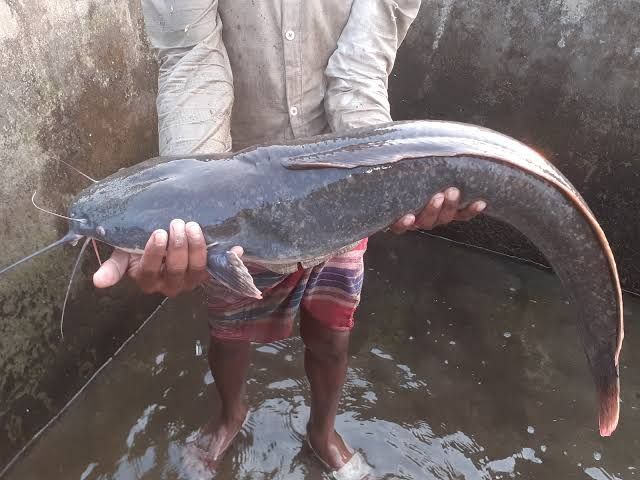
source
Contribution to Human Nutrition
African catfish play an essential role in addressing nutritional deficiencies in many parts of the world, particularly in developing countries where protein intake from animal sources is often limited.
Protein Source: As a rich source of high-quality protein, African catfish contribute significantly to the dietary protein needs of many communities. Protein is crucial for muscle development, immune function, and overall growth, especially in children and adolescents.
Affordable Nutrition: Due to their relatively low production cost and adaptability to different farming conditions, African catfish are often more affordable than other sources of animal protein like poultry, beef, or other fish. This affordability makes them an accessible option for low-income households.
Nutrient-Rich Diet: Consuming African catfish as part of a regular diet provides essential nutrients that can help prevent micronutrient deficiencies, such as iron-deficiency anemia, vitamin D deficiency, and other conditions linked to poor nutrition.
Economic Importance
African catfish have a considerable impact on the economy of regions where they are farmed. They provide employment opportunities in various sectors, including hatcheries, feed production, pond construction, and fish processing. The high demand for African catfish in both local and international markets also contributes to increased income for small-scale farmers and aquaculture entrepreneurs.
Challenges in Cultivating African Catfish
Despite its many benefits, there are challenges in cultivating African catfish that need to be addressed for sustainable production:
Disease Management: High stocking densities can lead to an increased risk of disease outbreaks, which can severely impact production if not managed properly.
Environmental Impact: The discharge of nutrient-rich wastewater from fish farms into natural water bodies can lead to eutrophication and other ecological issues.
Competition with Native Species: In areas where African catfish are not native, they can become invasive, outcompeting local fish species and disrupting ecosystems.
source
African catfish (Clarias gariepinus), or foreign Magur, plays a significant role in aquaculture due to its adaptability, high feed conversion efficiency, and excellent nutritional properties. It serves as a crucial protein source for human nutrition, particularly in regions with limited access to other animal protein sources. While it provides numerous benefits in terms of economic development and food security, sustainable practices and responsible management are essential to mitigate its ecological impact and ensure its continued role in meeting the nutritional needs of both fish and humans.